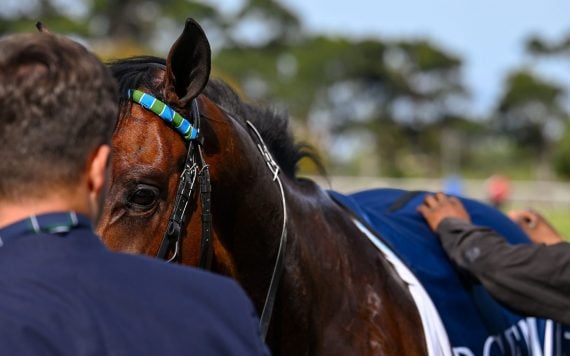 The last 4 years of my life has been dedicated to finding solutions to the on-going lack of customer growth that racing is experiencing and which is threatening the very existence of our sport, writes Leon Smuts.
The last 4 years of my life has been dedicated to finding solutions to the on-going lack of customer growth that racing is experiencing and which is threatening the very existence of our sport, writes Leon Smuts.
Given all of the many things that the industry has done over the years to improve the experience of players it puzzled me why there has been no or little improvement in the area of player acquisition.
My research suggests that our sport is still as exciting as it was 60 or 70 years ago and that fair to decent facilities, much improved distribution and relatively easy and affordable access to the product should still produce a very entertaining and relevant experience for new and novice players.
So why is customer growth not happening when the race day experience is enjoyed so much by everyone as can be seen from the impressive turnout at all of our big annual race days, with frequent repeat visits to these events thereafter?
Given my academic and practical background in marketing and a passion for racing, this conundrum presented a challenge that set me on a journey of discovery that has led to some very intriguing findings.
Our sport relies almost exclusively on the churn model for growth and in the absence of attracting new customers, presents the only viable racing alternative. Churn has regrettably become our industries crutch as anything that does not match up to this model with direct and immediate turnover benefits are frowned upon and ignored to the detriment of innovation and sustainable progress.
There is ample evidence to suggest that racing’s new customer problem is primarily product related and that this area could present the missing piece to complete the puzzle and return racing to its former glory.
I have recently been told by very knowledgeable and experienced industry employees that simplicity is the key to successful products and they mentioned that new players will find it easiest initially to understand place and win bets. Theoretically I would agree with them and this seems plausible but what the real world experience is showing makes this thinking completely outdated. Many first timers go to our big race day meetings each year and the mentioned products have been around forever and as such these newcomers are exposed to them, but with absolutely no positive impact on continued participation.
 A further critical problem with these basic products are that they simply cannot provide the new player with enough of an economic incentive to draw attention to racing as the return on a favourite or fancied runner for a win or place does not present a very attractive risk/reward ratio. So a person would either have to play big to win a decent sum of money or play smaller amounts on a longshot to win big, either scenario full of risk for experienced players, let alone newcomers. A viable future market are not necessarily big gamblers which is why this type of product will not appeal at the outset and is evident in racing’s lack of success with these traditional types of products.
A further critical problem with these basic products are that they simply cannot provide the new player with enough of an economic incentive to draw attention to racing as the return on a favourite or fancied runner for a win or place does not present a very attractive risk/reward ratio. So a person would either have to play big to win a decent sum of money or play smaller amounts on a longshot to win big, either scenario full of risk for experienced players, let alone newcomers. A viable future market are not necessarily big gamblers which is why this type of product will not appeal at the outset and is evident in racing’s lack of success with these traditional types of products.
Racing’s traditional customer base could in the main be classified as gamblers, an ideal customer base in terms of the churn model, as it requires regular and continued involvement.
If racing is successful in future the customer base will show a significant change away from the very one dimensional one that we have at present. The future customer will initially mostly get involved for recreational and entertainment purposes and not with any intention to become serious gamblers. This does not mean that many of them will not turn into very eager players after extended exposure, from which the churn model will benefit, but it will not be the primary trigger to involvement.
I am suggesting that the industry will obtain far better results by the addition of products that will expose new players to a more entertaining and enjoyable wagering experience rather than purely punting for profit, which for a new player is seldom the reality.
To be successful, new products would need to create much bigger pools on a more regular basis to compete with the lure of casino and lotto pools. That would offer the attraction to stimulate the initial interest to get involved after which chosen formats have to provide an ongoing entertaining experience to keep new players interested for an extended period of time. The longer players can be affordably exposed, the better the chance of securing a long term, racing involvement.
Successful targeting of the learning curve of players, through products designed for this purpose, is absolutely essential and will turn casual players into long term customers for the industry.
Products that make the initial and early experience fun, affordable and more rewarding will succeed where the current range of products have not, and make racing more relevant in the minds of a younger generation willing to pay good money, not necessarily to gamble, but to be entertained.
The industry’s biggest problem at this moment is the lurking enemy within as there is a reluctance to embrace new ideas and thinking and where complementary strategies and products are judged purely against a model that has its merits but also serious and growing limitations and risks.
 Industry employees should start using their vast knowledge and experience in a more positive manner as this strength is currently used in a very negative way to mostly suppress innovation and to find reasons why new ideas will not work as opposed to searching for ways to make them work.
Industry employees should start using their vast knowledge and experience in a more positive manner as this strength is currently used in a very negative way to mostly suppress innovation and to find reasons why new ideas will not work as opposed to searching for ways to make them work.
Merely maintaining the status quo by subsidisation through the many forms of successful diversification introduced is the surest way of causing the racing industry irreparable long term damage.
Operators should work on their ability to better anticipate the future market and invest in appropriate projects earlier rather than playing catch up to everyone else.
The industry knowhow and knowledge is certainly there but is rarely applied in a constructive and progressive manner.
Our industry should guard against having a future “Kodak moment” as the ability to be flexible and to adapt to a rapidly changing environment is a pre-requisite to be successful in challenging times.








